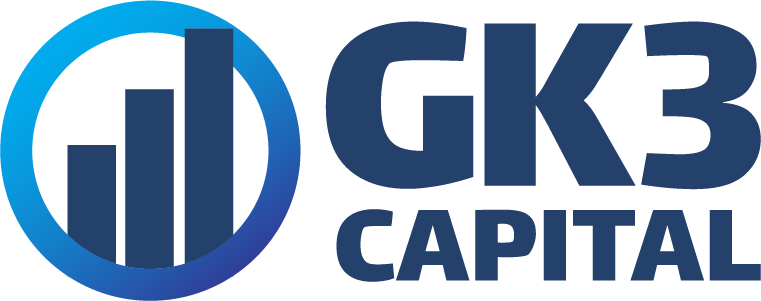GK3’s process is designed to help our clients go from wherever they are to extensive AUM growth. That process includes the Agile method, which we explain in our previous post. (Make sure to catch that before diving into this step-by-step look at how we work with our clients!)
Now, let’s take a closer look at how we take our clients from onboarding to results.
Getting Started with GK3
When we scope your engagement, we of course base our initial plan on your goals. Each plan is geared for long-term results or short-term deliverables — and oftentimes, our clients have goals in both areas.
Based on your goals, work flows down one of two branches: We’ll start long-term retainer work, or begin completing key projects with a deadline. Sometimes, our clients will have a project to complete upfront, but also want to begin a long-term retainer at the same time. In that case, we build a separate set of Agile points for each effort and can work on them concurrently.
We’ll explain how GK3 works on client projects in depth in a future post, but for now….
Read About the Flow of a GK3 Retainer
Regardless of whether we’re working on a project or a longer-term retainer, we focus on creating a funnel for growing AUM. (A lot more on this in our next post.) While we don’t build a full funnel for all clients, we do create parts of the funnel in order to achieve our project or retainer goals, such as building a landing page for generating leads or booking meetings.
But first, we’ve got to get acquainted! We’ll schedule a kickoff meeting, during which we’ll confirm your goals and show you how we believe we can help you accomplish them. Of course, the details count, so we’ll need additional info about goals, systems, processes, and more before presenting the initial 30-day priority tasks.
Uncovering the Details for Stronger Planning
While project-based client engagements often have a more narrow scope, it’s still important to run a short, relevant discovery, which may last a week post kickoff.
For our retainer clients, a typical discovery period lasts for 15-30 days before we begin setup of systems and the funnel.
To form our strategic approach, we evaluate:

Once we’ve nailed down discovery, we’ll share our 30-day sprint priorities.
With a retainer engagement, the initial sprint is focused heavily on setup and structure, before we work toward some critical quick wins — such as getting a content offer set up and generating new contacts or new engagement. This period is the thick of our onboarding process: We have to ensure access to important marketing and sales systems and accounts in order to enact the strategy.
Next Up: Flexible Foundation
With the first 30-day sprint underway, we’re working toward an outcome. We’re in account-setup-and-strategy mode with retainers and cranking out priority deliverables with projects.
What’s next?
Project clients will continue to progress toward their project goals, while retainer clients continue toward their 90-day overarching wins: Many of our retainer clients enter the partnership with us in order to generate quality sales conversations, so the first 90-day plan may take the form of a full-funnel build that allows them to find, prioritize, and begin to convert their most important and most qualified leads.

Throughout our engagement, we use 30-day sprint planning to prioritize, and Agile points to allocate the proper value to the priority tasks, so the funnel gets up and running regardless of where construction begins.
Don’t miss our next post: Building Your Funnel with GK3
This system allows us to focus on overall strategic cohesiveness, broken out into smaller, high-priority tasks. Importantly, it also allows for iteration. We believe in optimization and put it into practice, iterating on tactics employed as part of our 30-day sprints as part of our 90-day strategic cycles, too. That flexibility — the ability to react to what you learn — allows us to reach your goals with greater clarity and speed, resulting in more capital raised on tighter timelines.
Topics: Content Digital Marketing Digital Distribution Asset Management Website Sales Enablement CRM Automation Lead Generation Technology


.png)
